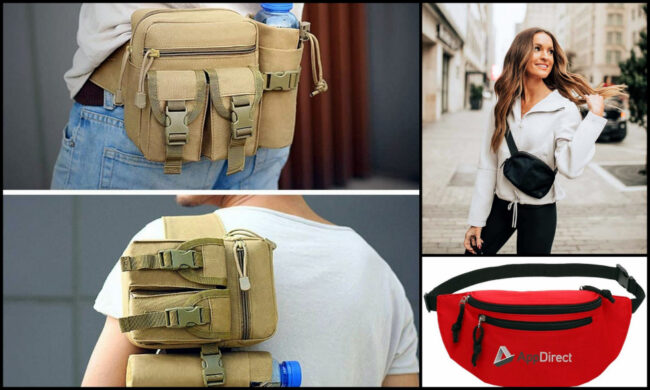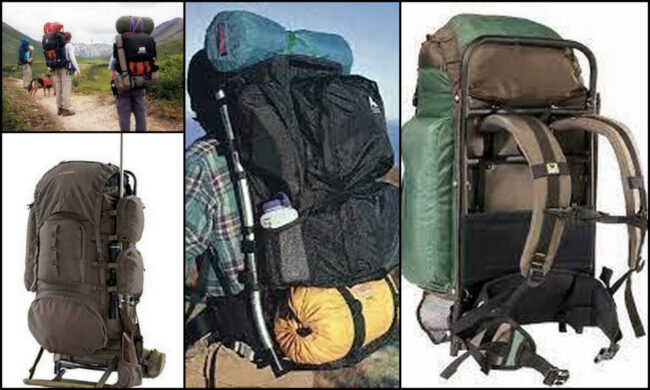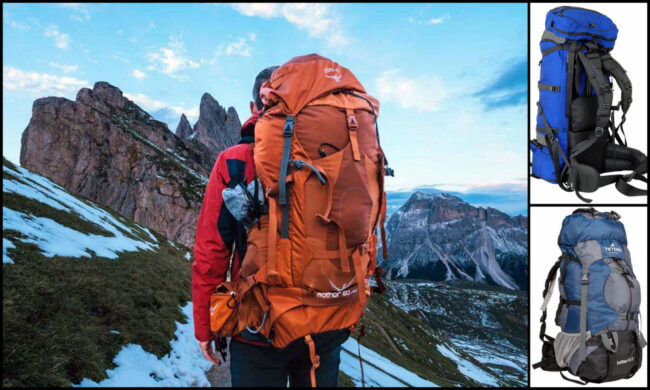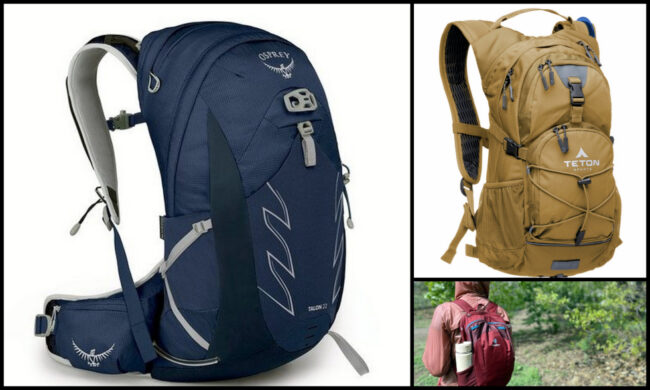Backpacks
This is one of the most important pieces of equipment that you’ll ever purchase. While you can purchase most equipment online without seeing it in person, I suggest that you actually get these at the store and in person. You’ll need to try it on for size and fit. An uncomfortable backpack will ruin your trip……..guaranteed!! Prices will vary from just a few dollars upwards and price will depend heavily on the type of pack and usage. Spending more does not necessarily insure that the pack is better for you, but usually does.
Keep in mind that the duration of your trip will to some degree dictate the size of the pack you need. The longer the trip, the larger the pack needed. Even so, never forget that you have to be physically able to carry it over long distances, and over rough terrain.
Packs can be broken down into two basic categories, internal & external frames. Each system has its own merits.
External frame packs are the choice for many. They allow you to carry the load higher on your back, are cooler as the offer more air space between the pack and back, and usually offer more tie-on points for additional equipment. They tend to be lighter in weight and for many, more comfortable overall. The down side to these packs is that with the higher center of gravity, they tend to be harder to handle in rougher terrain.
Internal frame packs are popular with many hikers as well. They tend to be more compact, have a lower center of gravity, fit closer to the body and are easier to handle in rough terrain. Personally, I prefer the internal frame packs. You don’t always have as much cargo capacity as an external frame pack, but in my case, I don’t want to carry any more than I have to. A lightweight pack is always your friend.
When looking for a backpack, either internal or external frame, there are a few features that you’ll want to get. First and foremost, look for packs with multiple tie-on points for items that are lightweight and take up a lot of space. External water bottle pockets are a good thing if you can have them, and some of the better packs even have special places to carry your trekking poles when you’re not using them.
I’d be remiss if I didn’t throw in “day packs”. These are almost always internal framed packs, but in a smaller version than those necessary for long multi-night trips into the wilderness. A few features to look for include, but are not included to: water bottle pockets on the outside, tie-on points for extra gear and at least one exterior pocket that gives you quicker access to things you might need more often. Maps, sunglasses, snacks and sun screen all fall into that category.
Make sure the pack has a good “suspension” system. That means that it’s designed to carry the weight in a way that will balance it on your back, distribute the weight to your hips and has lots of adjustments. A sternum strap is a must on any backpack in my opinion. This will pull the straps together and reduce the stain on your shoulders.
Next, look for lots of pockets, both inside and out. These are invaluable in putting necessary items close at hand. A removable top pocket is a nice feature. It can be taken off a base camp and used for a day pack.
Lastly I’d like to throw fanny packs into the mix even though they’re technically not “backpacks”. A lot of folks find these especially useful when visiting tourist attractions. Not only do they allow you to carry a few more items than in your pockets, but they offer a level of security against theft by pickpockets. They range in size and materials, some even made out military grade nylon and canvas. I’ve seen these used heavily in cities replacing purses.
Last, make sure it’s made of durable material. The days of the old, canvas packs are mostly gone with the wagon trains, at least for larger packs. Modern packs have lightweight frames made of aluminum and composite materials and are covered in heavy nylon fabric. Don’t pinch pennies on your backpack; you get what you pay for..
Last modified on: February 11th 2022.


